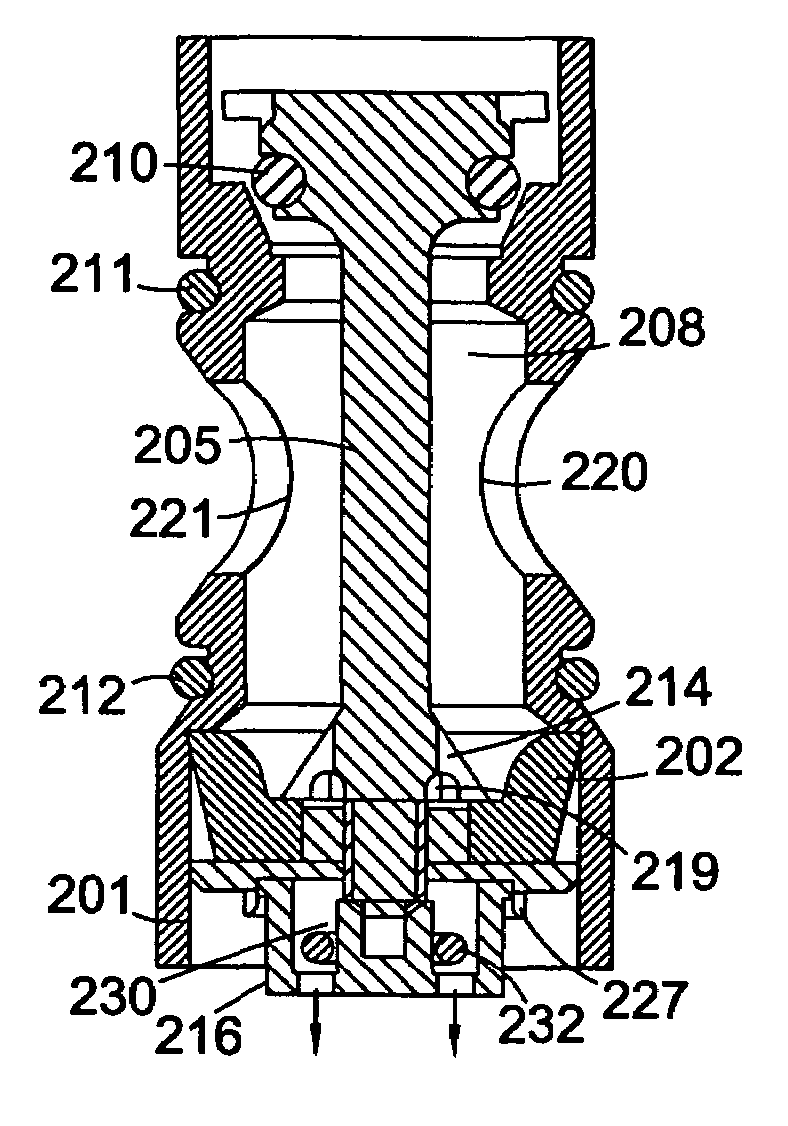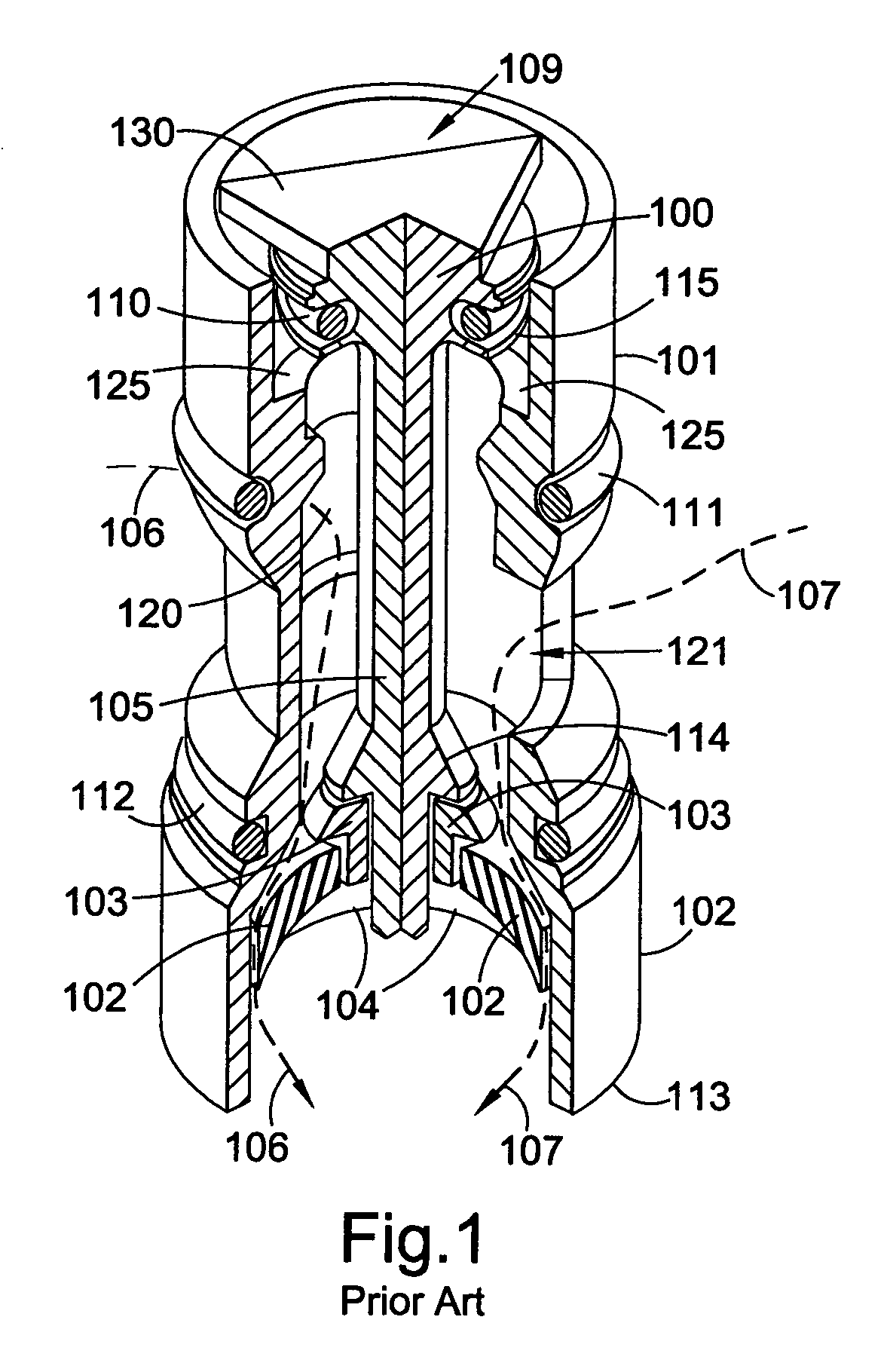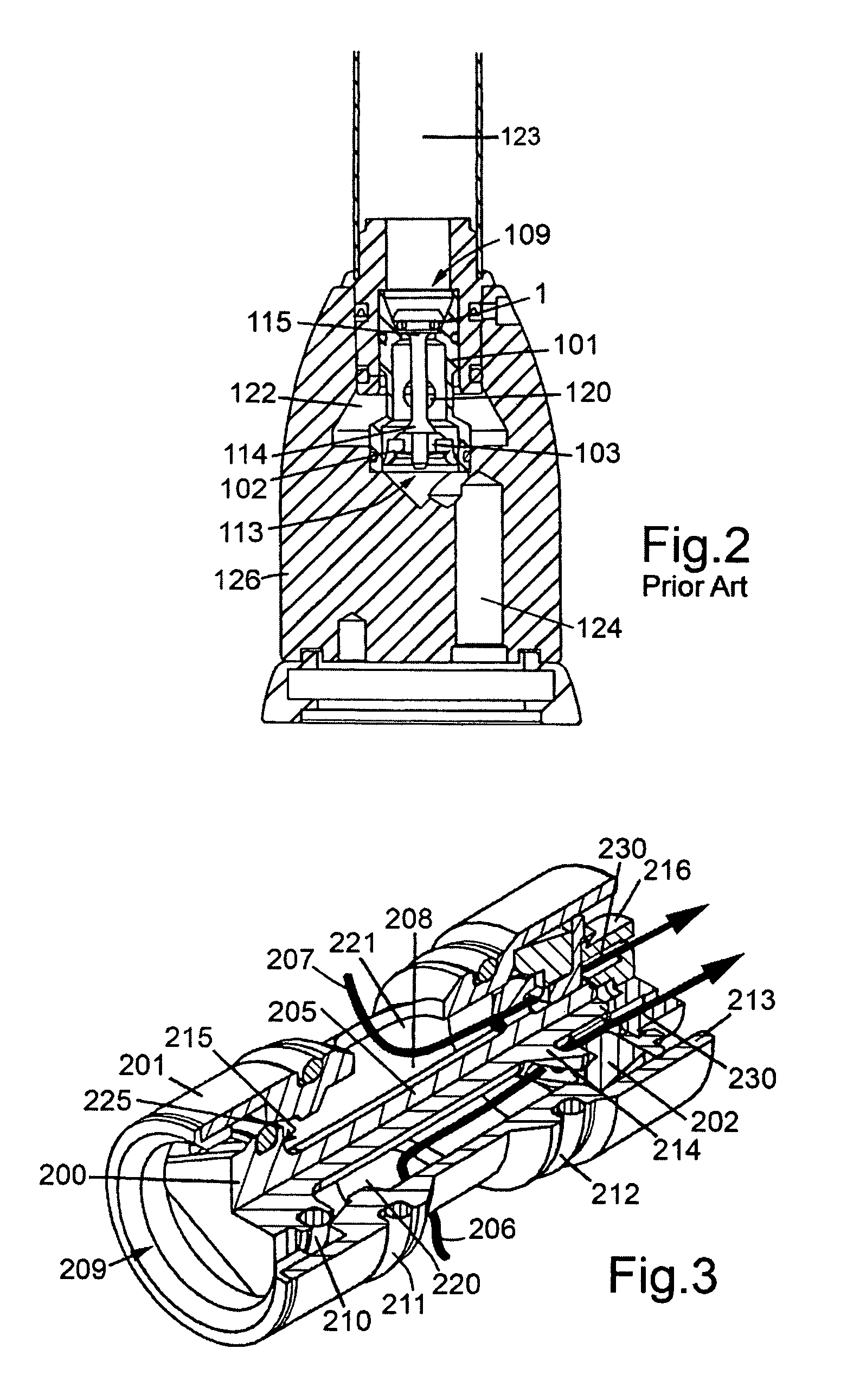Diverter valve
a valve and diverter technology, applied in the field of valve structures, can solve the problems of limited pressure range operation, tendency for knocking, leakage, etc., and achieve the effect of reducing the restriction effect of the flow regulator on the flow
- Summary
- Abstract
- Description
- Claims
- Application Information
AI Technical Summary
Benefits of technology
Problems solved by technology
Method used
Image
Examples
first embodiment
[0034]FIG. 3 shows a valve according to the invention. The arrangement is generally similar to the arrangement of FIGS. 1 and 2. The rubber cup washer 202 has been inverted to trap the water and form a seal between the outer lip of the washer 202 and the housing 201. Again, the rubber cup washer 202 and the lower piston element 214 together form a lower piston, with larger effective cross section than the top piston 215. The valve has a central waterway comprising several channels 219 through which the flow of water is routed to a standard flow regulator 216 that restricts the flow to a substantially constant rate over a range of water pressure. This results in an increase in pressure in the pressure chamber 208, producing a much improved seal on the nozzle. The valve of the invention works between 1 bar and 10 bar. An additional beneficial effect is that the pressure of the water pushes and locks the cup washer 202 against the inside of the housing 201, reducing the tendency for th...
second embodiment
[0041]FIGS. 7 to 18 show the invention, in which the valve housing is integrated with the spout of the faucet. As shown in FIG. 7, the valve assembly comprises an outer housing 301 which is attached to the inlet end 370 of the spout 371. In this embodiment, the outer housing 301 is soldered to the spout with a solder ring placed in a groove in the outer housing 301. The solder joint is concealed by a decorative ring held in place by an O-ring.
[0042]An upper valve housing part 845 is inserted into the outer housing 301, and sealed against it using an O-ring. A guide plate 346 and seating O-ring 347 are fitted into a channel 365 (FIG. 9) in the upper valve housing 345. The end of the valve member 300 is fastened to the guide plate 346. A flow regulator 316, of similar design to the flow regulator 216 of the first embodiment, is positioned against the lower part of the valve member 300. The lower part of the outer housing 301, containing the valve assembly, is fixed in position inside ...
PUM
 Login to View More
Login to View More Abstract
Description
Claims
Application Information
 Login to View More
Login to View More - R&D
- Intellectual Property
- Life Sciences
- Materials
- Tech Scout
- Unparalleled Data Quality
- Higher Quality Content
- 60% Fewer Hallucinations
Browse by: Latest US Patents, China's latest patents, Technical Efficacy Thesaurus, Application Domain, Technology Topic, Popular Technical Reports.
© 2025 PatSnap. All rights reserved.Legal|Privacy policy|Modern Slavery Act Transparency Statement|Sitemap|About US| Contact US: help@patsnap.com



